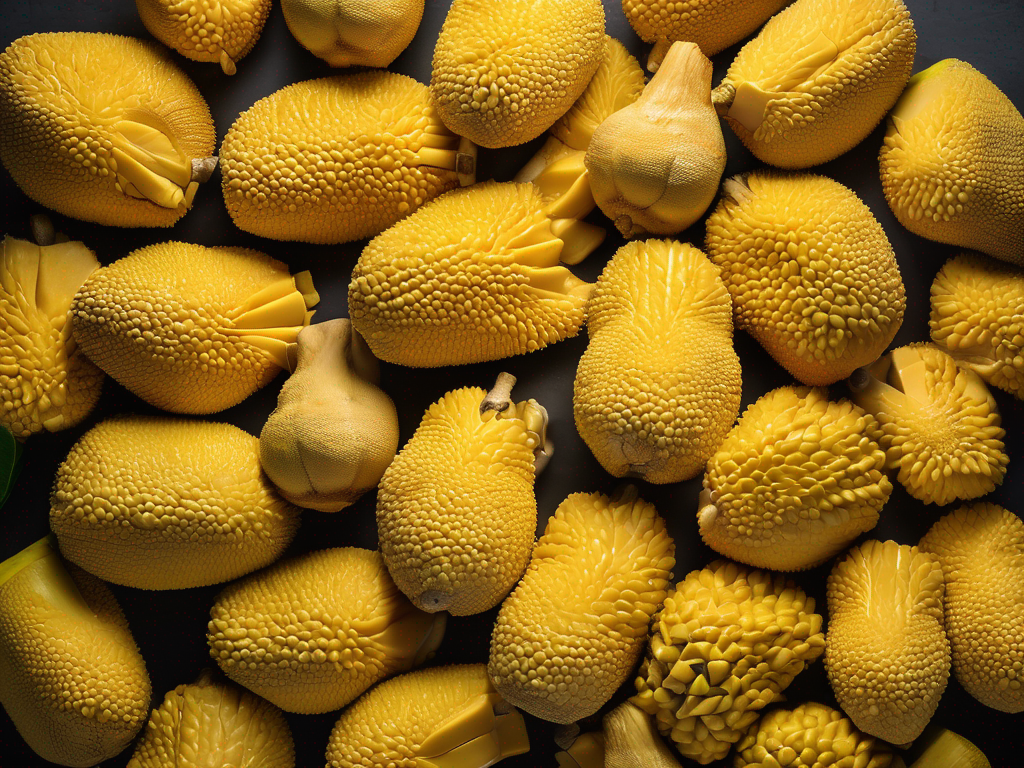
Signs that Jackfruit has Gone Bad and is No Longer Safe to Eat
Get Your Free Food Safety Cheat Sheet
30 most common foods with instant answers. Print it and stick it on your fridge—completely free!
Signs that Jackfruit has Gone Bad and is No Longer Safe to Eat
Jackfruit, a tropical fruit known for its unique flavor and versatility, is a favorite among many food enthusiasts. However, like any other perishable item, jackfruit can go bad if not stored properly. In this blog post, we will discuss the signs that indicate jackfruit has gone bad and is no longer safe to eat. (Jackfruit)
Understanding Jackfruit
Before we delve into the signs of spoilage, let's understand a bit more about jackfruit. Jackfruit is a large, spiky fruit that grows on the jackfruit tree. It is known for its sweet taste and meaty texture, making it a popular meat substitute for vegetarians and vegans. Jackfruit can be consumed fresh or used in various dishes such as curries, stir-fries, and desserts.
Proper Storage of Jackfruit
To ensure the longevity of jackfruit and maintain its freshness, it is essential to store it properly. Here are some tips for storing jackfruit:
- Keep jackfruit at room temperature if you plan to consume it within a few days.
- For longer storage, refrigerate the jackfruit in an airtight container.
- Cut jackfruit should be stored in the refrigerator and consumed within a few days.
- Frozen jackfruit can be stored for several months in the freezer.
Now that we have covered the basics, let's move on to the signs that indicate jackfruit has gone bad.
Signs of Spoiled Jackfruit
1. Mold Growth
- Mold growth on the surface of the jackfruit indicates spoilage. If you notice any fuzzy spots or discoloration, it is best to discard the fruit.
2. Unpleasant Odor
- Fresh jackfruit has a sweet and fragrant aroma. If the jackfruit emits a sour or fermented smell, it is a sign that it has gone bad.
3. Slimy Texture
- Touch the jackfruit to check for a slimy or mushy texture. Spoiled jackfruit will feel slimy to the touch, indicating the presence of bacteria.
4. Discoloration
- Discoloration of the flesh or skin of the jackfruit is a clear indication of spoilage. Any changes in color, such as browning or dark spots, should be a cause for concern.
5. Loss of Firmness
- Fresh jackfruit should be firm to the touch. If the fruit feels soft or mushy, it is a sign that it is no longer safe to eat.
Safety Precautions when Handling Jackfruit
To ensure food safety and prevent the consumption of spoiled jackfruit, here are some safety precautions to keep in mind:
- Wash your hands before handling jackfruit to prevent contamination.
- Use clean knives and cutting boards to cut the fruit.
- Store jackfruit away from other perishable foods to avoid cross-contamination.
- When in doubt, throw it out. It is better to discard questionable jackfruit than risk foodborne illness.
Conclusion
In conclusion, being able to identify the signs of spoiled jackfruit is essential for maintaining food safety. By following proper storage guidelines and staying vigilant for any signs of spoilage, you can enjoy fresh and delicious jackfruit without any concerns. Remember, when in doubt, trust your senses and err on the side of caution to ensure a safe eating experience. (Jackfruit)
Authoritative Food Safety References
These agencies and university labs inform every tip and health precaution we publish.
USDA FoodKeeper – Cold Storage Guidelines
Official refrigerator, freezer, and pantry timelines maintained by the U.S. Department of Agriculture.
Visit USDA FoodKeeperFDA Produce Safety Rule & Grower Guidance
Field-to-fridge handling practices that prevent contamination of fruits, vegetables, and leafy greens.
Visit FDA Produce SafetyCDC Foodborne Illness Prevention Hub
Surveillance-backed guidance on pathogens, symptoms, and steps to reduce foodborne illness risk.
Visit CDC Food SafetyUC Davis Postharvest Technology Center
University research detailing optimal storage atmospheres for produce after harvest.
Visit UC Davis PostharvestPenn State Extension – Home Food Preservation & Safety
Peer-reviewed extension bulletins on safe canning, chilling, and reheating practices.
Visit Penn State ExtensionGet Your Free Food Safety Cheat Sheet
30 most common foods with instant answers. Print it and stick it on your fridge—completely free! Want more? Upgrade to the complete guide with 70+ foods.
Scan your food directly and get instant safety info using our AI-powered camera feature.